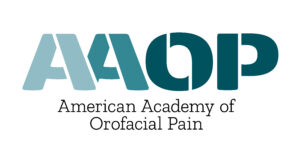Updates on Facial Pain, Headache, Wellness and Sleep
Disney’s Grand Floridian Resort & Spa, Orlando, Florida
As a registrant for the AAOP 2023 annual meeting you will also receive a one (1) year subscription to the AAOP CE Learning Portal.

Making Pain Matter: Prioritizing Prevention and Management of Chronic Pain in Children and Adolescents
Tonya Palermo
Dr. Tonya Palermo is Professor and Vice Chair for Research, Department of Anesthesiology and Pain Medicine at University of Washington with adjunct appointments in Pediatrics and Psychiatry. She holds the Hughes M. and Katherine Blake Endowed Professorship in Health Psychology. Dr. Palermo serves as Associate Director of the Center for Child Health, Behavior and Development at Seattle Children’s Research Institute where she directs the Pediatric Pain & Sleep Innovations Lab. Her NIH-funded research focuses on innovative psychological treatments for managing and preventing chronic pain in children, adolescents, and young adults. Dr. Palermo has published over 290 articles and has published two books on cognitive-behavioral therapy for pediatric chronic pain. Dr. Palermo is the Editor-in-Chief for the Journal of Pain. She is active in training clinician-scientists at the postdoctoral and faculty level and directs a T32 postdoctoral training program in anesthesiology research.
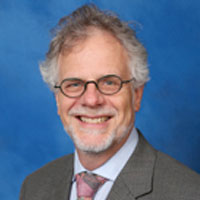
The National Academy of Medicine 2020 Report on Temporomandibular Disorders: progress, opportunities, and perspectives
Richard Ohrbach, DDS, PhD
Richard K. Ohrbach, DDS, PhD, is an Outstanding Oral Surgeon, Researcher, and Pain Expert with at University at Buffalo SUNY School of Medicine in Buffalo, New York
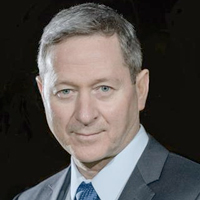
Neuropathic Orofacial Pain: Bench to Bedside
Eli Eliav, DMD, PdD
Dr. Eli Eliav joined the University of Rochester Medical Center in 2013, when he was appointed Director of Eastman Institute for Oral Health and Vice Dean for Oral Health within the School of Medicine and Dentistry.
Previously, Dr. Eliav served as Director of the Center for Temporomandibular Disorders and Orofacial Pain and as Chair, Dept. of Diagnostic Sciences at UMDNJ – New Jersey Dental School. He was also the University’s Carmel Endowed Chair in Algesiology since 2004.
Dr. Eliav’s current research projects involve orofacial pain, quantitative sensory testing, neuropathic pain, pain modulation and the role of inflammation in neuropathic pain.
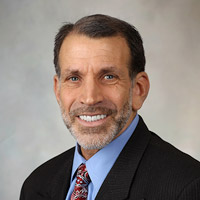
Trigeminal Neuralgia – Make the Diagnosis, Know your Risks
Richard S. Zimmerman, M.D
Objectives:
• Outline distinctive characteristics of trigeminal neuralgia (TN)
• Review anatomy pertinent to this disorder
• Briefly outline the surgical treatments for TN
• Discuss innovations in neuro-imaging for TN
• Legal considerations of TN cases
Richard S. Zimmerman, M.D., is a consultant in the Department of Neurologic Surgery at Mayo Clinic in Arizona and staff neurosurgeon at Mayo Clinic Hospital in Phoenix. He joined the staff of Mayo Clinic in 1990 and holds the academic rank of professor of neurosurgery, Mayo Clinic College of Medicine and Science.
Dr. Zimmerman earned his B.A. with honors at Boston University and his M.D. at Boston University School of Medicine. He completed an internship in general surgery and residency in neurosurgery at Medical College of Virginia – Virginia Commonwealth University, followed by a fellowship in neurovascular surgery at Barrow Neurological Institute.
Dr. Zimmerman’s clinical work focuses on trigeminal and other cranial neuralgias, hemifacial spasm, vascular and skull base neurosurgery, and epilepsy surgery. He has served as principal investigator and co-investigator on research protocols and has frequently presented his work both nationally and internationally. He has authored over 100 peer reviewed articles, book chapters, abstracts, and other written publications. Dr. Zimmerman serves on the Medical Advisory Board of the Facial Pain/Trigeminal Neuralgia Association and has championed innovations in the treatment of trigeminal neuralgia surgery focusing on improving outcomes and increasing safety.
In addition to his clinical interests, Dr. Zimmerman has held numerous administrative leadership positions. He served as the inaugural Medical Director and opened the Mayo Clinic Hospital in Phoenix, as Associate Dean for Mayo Clinic Graduate Medical Education, and as the Dean of Education for Mayo Clinic Arizona.
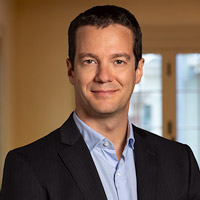
Pharmacological Management of Obstructive Sleep Apnea
Luigi Taranto Montemurro,MD
In this presentation, Dr. Montemurro will provide the most recent updates related to OSA pharmacotherapy, including the latest research findings and ongoing clinical trials. He will also discuss the potential benefits of using a combination of adrenergic and antimuscarinic drugs for the treatment of OSA, and provide an overview of the current state of OSA pharmacotherapy.
Luigi Taranto Montemurro MD is an Italian physician with extensive of experience in the field of pulmonology and sleep medicine. He specialized as a pulmonologist and sleep doctor in Italy and then continued his education as a post-doctoral fellow at the University of Toronto and at Harvard Medical School. Currently, he is working at Apnimed, a biotech company in Cambridge (MA) that specializes in OSA pharmacotherapy, and at the Brigham and Women’s Hospital (BWH) in Boston. During his post-doctoral years at Harvard, Luigi made a significant contribution to the field of OSA pharmacotherapy by pioneering the discovery of a combination of adrenergic and antimuscarinic drugs for the treatment of OSA. He was also a founder of Apnimed, where he currently holds the role of Chief Scientific Officer (CSO). Dr. Montemurro’s current research focuses on identifying new pharmacological interventions that can improve the effectiveness of OSA treatment. He has published numerous articles on the subject in peer-reviewed journals, and his work has been widely recognized in the scientific community. In this presentation, Dr. Montemurro will provide the most recent updates related to OSA pharmacotherapy, including the latest research findings and ongoing clinical trials. He will also discuss the potential benefits of using a combination of adrenergic and antimuscarinic drugs for the treatment of OSA, and provide an overview of the current state of OSA pharmacotherapy.
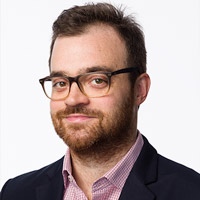
Long-Term Opioid Therapy in Chronic Pain: Research Findings on Opioid Misuse and Clinical Implications.
Marc O Martel
Opioids are commonly prescribed for the management of patients with chronic noncancer pain (CNCP). Despite the potential analgesic benefits of opioids, long-term opioid therapy (LTOT) may be accompanied by opioid use problems such as opioid misuse and opioid use disorder (OUD). At the end of this presentation, participants should be able to identify some of the most common opioid misuse behaviors observed among patients with CNCP, and should be familiarized with the diagnostic criteria for OUD. Participants should also be able to describe some of the factors known to contribute to opioid use problems among patients with chronic pain. A particular emphasis will be placed on patient-specific factors known to be associated with an increased risk of opioid misuse and OUD among patients with chronic pain. Finally, participants should be able to discuss the strategies that can be used to prevent or reduce the occurrence of opioid misuse, OUD, and other opioid-related harms in patients with chronic pain who are prescribed long-term opioid therapy.
Dr. Martel is Assistant Professor in the Faculty of Dental Medicine and the Department of Anesthesiology at McGill University. He received a PhD in Clinical Psychology from McGill University in 2012, and then completed a postdoctoral fellowship in the Department of Anesthesiology and Pain Medicine at Harvard Medical School. Dr. Martel’s current research program primarily focuses on the biopsychosocial determinants of opioid use problems among patients with chronic pain who are prescribed opioids. He is also interested in the factors associated with cannabis use and cannabis use problems in patients with chronic pain. During his training as a clinical psychologist, Dr. Martel has acquired clinical experience working with patients presenting with various types of chronic pain conditions. He is currently the research director of the Alan Edwards Pain Management Unit of the McGill University Health Centre (MUHC), a multidisciplinary pain treatment setting for patients with chronic pain. Over the years, Dr. Martel has authored or co-authored more than 85 peer-reviewed articles and book chapters on topics related to pain, mental health, and substance use. He currently holds a Tier 2 Canada Research Chair (CRC) and his work has received financial support from various funding sources, such as the Canadian Institutes of Health Research (CIHR) and the Quebec Health Research funds.
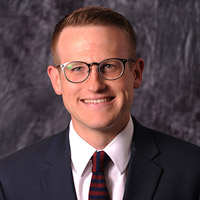
Demistifying Neuromodulation – Treatment Options For Headache, Neuropathic Pain and Other Refractory Pains
David Darrow, MD
Noninvasive neuromodulation strategies and platforms are rapidly increasing in popularity for the treatment of headache and pain. In this session, we will cover a wide range of new devices and approaches while discussing cutting edge invasive work for facial pain.
Learning Objectives
1. There are a multitude of FDA approved noninvasive neuromodulation options for headache disorders
2. Spinal cord stimulation and peripheral nerve stimulation has become popular for neuropathic pain
3. Central and peripheral trigeminal modulation are being explored as possible future therapies.
Dr. David Darrow is an Assistant Professor in the Department of Neurosurgery at the University of Minnesota and the Rockswold-Kaplan Endowed Chair for Traumatic Brain Injury at Hennepin County Medical Center, specializing in functional and pain neurosurgery. Dr. Darrow treats diseases of the central nervous system with neuromodulation including epilepsy, movement disorders, trigeminal neuralgia/facial pain, chronic pain, and psychiatric diseases. Dr. Darrow is co-PI of the Herman-Darrow Human Neuroscience Lab with a mission of understanding and treating disorders of the nervous system with neuromodulation. The Herman-Darrow Lab links together circuit-level electrophysiology with behavior. By pairing neuromodulation with a quantitative understanding of the pathological circuits of the brain, the lab hopes to help patients improve symptoms and quality of life.
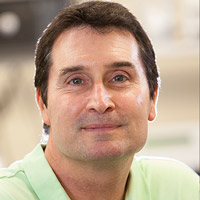
Glial Targets For Neuropathic Orofacial Pain
Paul Durham, MS, PhD
Neuropathic orofacial pain, which can result from injury to the trigeminal nerve, is associated with development of peripheral and central sensitization that is mediated by enhanced neuron-glial and glial-glial cell interactions. Within the peripheral nervous system, satellite glial cells and Schwann cells are found in association with neurons in the trigeminal ganglion and play an important role in modulating the excitability state of neurons involved in pain signalling. In the central nervous system, the three main types of glial cells are astrocytes, microglia, and oligodendrocytes that function in a neuroprotective manner to maintain homeostasis within the spinal cord and brain, and under pathological conditions are implicated in control of pain. In response to nerve injury, glial cells can proliferate and/or release inflammatory mediators to promote neuroinflammation and alter neural plasticity resulting in chronic sensitization and pain. More recently, there is evidence to support the notion that gliopathy, defined as dysregulation of glial cell function, can cause development of neuropathic pain. Despite the significant psychosocial burden of neuropathic orofacial pain, there remains a need for improved therapeutic strategies for providing symptom relief and reversing the underlying pathology. In my presentation, I will review the important roles of the peripheral and central glial cells under normal and neuropathic orofacial pain conditions. I also will discuss the potential benefit of novel therapeutics that target glial cells as a complementary or alternative approach for neuropathic orofacial pain. Learning Objectives 1. Recognize the primary functions of peripheral and central nervous system glial cells under normal conditions and be able to differentiate between the terms neuropathy and gliopathy. 2. Understand the roles of peripheral and central glial cells in mediating neuroinflammation in response to nerve injury and promoting changes in neural plasticity to enhance pain signaling. 3. Describe how pharmaceutical and non-pharmaceutical therapies modulate the activity of glial cells in the peripheral and central nervous system to mediate inhibition of inflammation, sensitization, and trigeminal pain signaling.
Paul L. Durham, PhD, is Distinguished Professor of Cell Biology at Missouri State University and Director of its Center for Biomedical and Life Sciences, a multidisciplinary laboratory utilizing cellular/molecular, microbiological, biochemical, and chemical techniques. A major focus of his research has been to elucidate the cellular/molecular mechanisms by which novel drugs, devices, and nutraceuticals modulate the excitability state of neurons and glial cells under pathological conditions. More recently, his laboratory has been investigating changes in the GABAergic system in the upper spinal cord and trigeminal ganglion neurons and glia in preclinical models of chronic migraine and TMD. Another focus has been on understanding auditory changes associated with chronic migraine and TMD since hearing sensitivity is reported as a most bothersome symptom. A frequently invited guest lecturer and the author of ~ 90 peer-reviewed research articles and ~ 200 published abstracts. Dr. Durham has served on numerous NIH study sections and pharmaceutical company advisory boards and is currently a reviewer for more than 10 journals. Dr. Durham is a member of the Society for Neuroscience, American Headache Society, American Pain Society, and American Academy of Orofacial Pain.
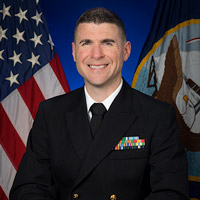
Acupuncture In The Management Of Orofacial Pain
James Hawkins, DDS, MS
Synopsis This presentation will discuss the origin and various styles of acupuncture. It will address proposed mechanisms of action for acupuncture, as well as evidence for and against its use. Finally, it will discuss acupuncture resources for the orofacial pain practitioner.
Learning Objectives:
- Discuss acupuncture theory
- Describe evidence for and against acupuncture use
- State acupuncture resources
CDR James Hawkins currently serves as Chair of the Orofacial Pain Center at the Naval Postgraduate Dental School (NPDS) in Bethesda, MD, as well as the Orofacial Pain Specialty Leader to the Navy Surgeon General. Originally from Columbus, Ohio, he attended Dental School at The Ohio State University, graduating with his DDS in 2010. In 2015 he completed a residency in Orofacial Pain at NPDS and received a Master’s Degree in Oral Biology from the Uniformed Services University of the Health Sciences. He next served as the sole Department of Defense Orofacial Pain Specialist in the Southwestern region of the United States while at Naval Medical Center San Diego from 2015-2018. In 2017, he received a certificate in Medical Acupuncture from Helms Medical Institute. CDR Hawkins is a Diplomate of the American Board of Orofacial Pain and the American Board of Dental Sleep Medicine. His military awards include the Navy and Marine Corps Commendation Medal (2 awards), the Joint Service Achievement Medal, and the Navy and Marine Crops Achievement Medal. His recent academic awards include the NPDS Dean’s Award for Teaching Excellence (2021) and the Walter Reed Associate Master Clinician Award (2021). He currently serves on the Board of Directors for the American Academy of Orofacial Pain, the American Board of Orofacial Pain, and the American Board of Dental Specialties. He is also an oral board examiner for the American Board of Orofacial Pain.
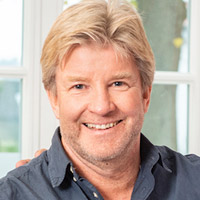
Unraveling The Orofacial Cervical Complex
Harry Von Piekartz, PT, PhD, MSc, MT (OMT)
Dysfunction in the he Orofacial Cervical Complex (OFCC) may lead to a variety of clinical problems, including temporomandibular joint disorders (TMD), headaches, neck pain, and orofacial pain. This lecture will explore the relationship between the upper cervical and the orofacial region, and how this can affect clinical outcomes in dentistry and physical therapy
Learning Objectives:
- Understand the anatomy and function of the Orofacial Cervical Complex, and how it relates to the Trigeminal Cervical Nucleus.
- Identify the clinical implications of the OFCC for dentistry including its role in temporomandibular joint disorders (TMD), orthodontics, and orofacial pain management.
- Discuss the importance of the OFCC in physical therapy, including its role in posture, balance, and overall body mechanics.
- Review treatment options for addressing OFCC dysfunction, including manual therapy, therapeutic exercise based on the latest evidence
Harry is a Professor at the University of Applied Science in Osnabruck (Germany) and is study director of the Master of Science in Musculoskeletal Therapy. He is senior IMTA Teacher of the International Maitland Teacher Association (IMTA) and founder of Cranial Facial Therapy Academy. He successfully completed his Master of Science degree in Physiotherapy at the University of Leuven (Belgium). His thesis was on „The Neurodynamic Testing of the Mandibular Nerve: Reliability and norm-data. In 2005 he received his PhD in Rehabilitation science on the Staffordshire University(UK). He directs several musculoskeletal research projects and works part-time in his specialized clinic in musculoskeletal therapy of craniofacial dysfunction and pain in Ootmarsum, The Netherlands. He published 4 Books in 3 languages and more than 100 peer-reviewed articles in the field of physical therapy, TMD, pain and motor control
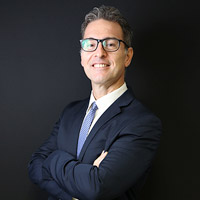
The Current Definition of Bruxism and its Impact on Pain Studies
Daniele Manfredini, DDS
Bruxism has always been considered a detrimental activity for the stomatognathic structures, but evi-dence of its relationship with temporomandibular disorders (TMDs) has always been inconclusive. Over recent years, a growing evidence emerged on the fact that using standard cut-off points for eve-ryone as a ‘gold-standard’ assessment of sleep bruxism or non-sleep bruxism based on the count of RMMA events should not be considered optimal for clinical use and was a bias of the existing litera-ture. This issue is indeed best exemplified by the still inconclusive literature on the polysomnographic assessment of sleep bruxism and its clinical consequences, amongst which pain. For this reason, an enlarged spectrum of masticatory muscle activities was included in the updated definition of bruxism since the first expert consensus paper in 2013. In particular, the inclusion of tonic activities, even without teeth contact (i.e., muscle bracing), within the bruxism construct offers new perspectives for the phenotypization of bruxism and its possible consequences. Concerning pain studies, a proposed mechanism for the bruxism-TMD relationship within a biopsychosocial framework at the individual level is that stress sensitivity and anxious per-sonality traits may be responsible for those bruxism activities that may lead to TMD pain due to mu-scle exhaustion and TMJ overload. In turn, pain is modulated by psychosocial factors (e.g., depres-sion, anxiety, treatment-seeking behavior), thus creating a vicious circle that should be targeted at the diagnostic and treatment level.
Daniele Manfredini received his DDS from the University of Pisa, Italy in 1999, a MSc in Occlu-sion and Craniomandibular Disorders in 2001 from the same University, a PhD in Dentistry from the ACTA Amsterdam, The Netherlands, in 2011, and a Post-Graduation Specialty in Orthodontics from the University of Ferrara, Italy, in 2017. He achieved the Diplomate Status from the American Board of Orofacial Pain in 2021. He is an active Member of the European Academy of Orofacial Pain and Dysfunction (former EACD) and Fellow of the American Academy of Orofacial Pain. He is Founder Member of the Italian Society of Prosthodontics and Oral Rehabilitation (SIPRO), and President of the Italian Study Group on Orofacial Pain (GSID). He was a clinical fellow at the Section of Prosthetic Dentistry, Department of Neuroscience, Universi-ty of Pisa, Italy until 2005. From 2006 to 2016, Daniele Manfredini has been Assistant Professor at the School of Dentistry and coordinator of the research projects at the TMD Clinic, Department of Maxillofacial Surgery, University of Padova, Italy On January 2017, the Italian Ministry of University and Research (MIUR) appointed him as a Full Professor by scientific merit at the age of 41. Currently, Daniele Manfredini serves as Professor at the School of Dentistry, University of Siena, Italy, where he has held teachings in Oral Physiology and in Clinical Gnathology since 2017. Daniele Manfredini authored more than 240 papers in the field of bruxism and temporomandibular disorders in journals indexed in the Medline database (Scopus H-index=49). He also edited, among the others, the book “Current concepts on temporomandibular disorders” (Quintessence Publishing, 2010), including contributions from 45 world-renowned experts, and co-authored several textbooks on the same topics. Based on publication ratings, in November 2013, the US agency Expertscape ranked Prof. Manfredini as world #1 expert in the field of temporomandibular joint disorders, and since then he has always been included in the top three experts in the field. Since November 2018, he has also been indicated by the same agency as #1 in the field of bruxism. Since 2018, Daniele Manfredini is Member and Co-ordinator of the Bruxism Consensus Panel within the International Association for Dental Research, which works on the updated definition and classification strategies for bruxism

The Connection Between Occlusion and Temporomandibular Disorders
Gary DeWood, DDS, MS
One of the most actively debated subjects among doctors with a passion for one or both is the connection between Occlusion and TMD. At many points in my journey, I have been quite clear about that relationship, but time on the planet combined with a willingness to hear others’ perspectives, has made it apparent to me that clarity is an ever-changing dynamic for anyone willing to be open to change. Unfortunately, many debates, particularly on this subject, aim to dismiss another position rather than find the connections that make each person’s truth not only valid but vital. This brief review of these connections will hope to do just that.
Learning Objectives
- See the possibilities for our patients when the restorative dentist and the orofacial pain specialist share a common goal and a common language.
- Create interdisciplinary rather than multidisciplinary interactions with intention.
- Build value for the Orofacial Pain Specialty and for the Restorative Dentistry that may be involved in success and stability.
Gary practiced family general dentistry from 1980 until 2003 when he began to devote the majority of his time to teaching. In 2004 he earned a Master of Science in Biomedical Sciences from The University of Toledo College of Medicine. He served as clinical director at the Pankey Institute from 2003 to 2008. In 2008 he joined Frank Spear as the president of The Seattle Institute, which was merged with The Scottsdale Center to form Spear Education. He has served as Executive Vice-President since that merger. He teaches in Spear workshops and seminars as well Spear Online. He maintains a limited private practice on the Spear Campus.

The Role of Physical Therapy (PT) in the Management of TMJ Intra-articular Disorders
Emily Kahnert
The Role of Physical Therapy (PT) in the Management of TMJ Intra-articular Disorders Well-known for expertise providing conservative care for myogenic conditions, physical therapists are also appropriate first-line providers for joint conditions. This talk will discuss conceptual and practical components of how physical therapists approach assessment, diagnosis, and treatment of individuals with specific diagnoses of temporomandibular joint disorders. Insight regarding the physical therapist’s focus on movement and functional limitations will support interdisciplinary collaboration between all providers treating patients with orofacial pain.
Learning objectives:
- Appreciate how a PT function-based evaluation and treatment plan aligns with the pathoanatomical DC-TMD diagnostic paradigm0
- Understand the interaction between evidence and experience regarding specific interventions for these conditions
- Consider case examples to inform interprofessional collaboration when treating patients with temporomandibular joint disorders
Emily Kahnert, DPT, CCTT is a physical therapist in the Temporomandibular Disorders (TMD), Orofacial Pain and Dental Sleep Medicine Clinic at the University of MN School of Dentistry. She completed her Doctor of Physical Therapy (DPT) at the University of Minnesota in 2005, where her interest in treating performing artists led her to pursue specialty work in TMD and orofacial pain. She has practiced exclusively with TMD and orofacial pain populations in multidisciplinary settings for nearly seventeen years. She earned her Certified Cervical and Temporomandibular Therapist (CCTT) designation through the Physical Therapy Board of Craniofacial and Cervical Therapeutics (PTBCCT) in 2019 and is currently a PhD candidate at the University of MN studying telerehabilitation for individuals with TMD. Her research interests also include TMJ biomechanics and diagnostic classification. When not studying, working, or spending time with her family, she enjoys speaking about her practice area, teaching physical therapy and dental students, and playing her cello.
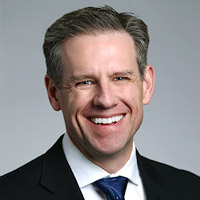
Sleep, Pain and Strategies to Decrease Suffering Through Better Rest
Michael Howell
Sleep is critically important for brain and body health and there is growing evidence that poor sleep leads to chronic pain. By helping our patients sleep better we can often help alleviate their suffering from pain as well.
Learning Objectives
After this sessions attendees will be able to:
- Review the effects of poor sleep on brain function.
- Recognize how restlessness can mimic a hypervigilant insomnia in patients with pain syndromes.
- Understand how poor sleep exacerbates chronic pain.
Dr. Howell is a Professor and the Division Head of Sleep Medicine in the Department of Neurology at the University of Minnesota. He is dedicated to developing novel strategies to improve brain functioning through sleep health. He is the Director of the Sleep Performance Training for Athletes Program at H Health Fairview, helping elite athletes and sports teams optimize their performance through better sleep and circadian health. He is also the Vice-Chair for Education and Faculty Affairs in the Department of Neurology.
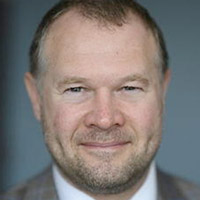
Imaging in TMD: New Technologies on the Horizon
Donald Nixdorf, DDS, MS
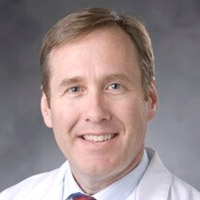
CGRP Blocking Medications for Migraines: Update and New Additions
Timothy Collins
Dr. Collins will review new migraine headache treatments, including the new monthly CGRP Antibody injectable medicationsand quarterly CGRP Antibody infusions He will discuss the oral CGRP receptor blocking medications, and the new Serotonin 1F receptor blocking medications that are used for both acute migraine treatment and migraine prevention. He will also discuss how to integrate these new treatments into the older medications used for treating migraine headaches. disclosures: Dr. Collins has no financial disclosures. He will discuss both “on label” FDA indicated treatments of migraine, and will discuss some “off label” use of medications for migraine prevention.
Dr. Collins received his undergraduate degree from Michigan State University in 1984 and his Medical Degree from Wayne State University in Detroit in 1988. He started his residency at Letterman Army Hospital in 1999, and completed his Neurology Residency at University of California San Francisco in 1992. After serving as the Chief of Neurology at Darnal Army Community Hospital (Ft. Hood Tx) for 4 years, he started a private practice in North Carolina. He joined the Duke University Faculty in 1998. Over the last 10 years he has grown the Duke Neurology Headache Clinic to a comprehensive service with 3 Physicians, 4 APPs. He started a Headache Fellowship Training program in 2018 which has graduated a headache fellowship trained neurologist every year since.
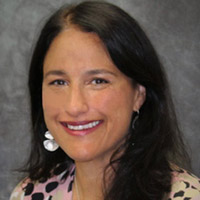
A Pediatric Rheumatologist Perspective on TMJ Arthritis: Challenges in Diagnosis and Management
Mona Riskalla, MD, MS
Inflammatory arthritis of the TMJ poses diagnostic and treatment challenges. In the session, you will be introduced to the indications for referral to rheumatology for assistance in diagnosis and management of Juvenile Idiopathic Arthritis (JIA) involving the TMJ. The session will discuss controversies in the diagnosis of isolated inflammatory arthritis of the TMJ. We will review the latest published guidelines for the co-management of inflammatory arthritis of the TMJ in JIA.
- Explain the way in which juvenile idiopathic arthritis (JIA) is diagnosed
- Identify challenges in classifying TMJ synovitis as JIA
- List the most common medication treatments used for TMJ synovitis
Dr. Mona Riskalla is an Assistant Professor of Pediatrics in the Division of Pediatric Rheumatology, Allergy, and Immunology at the University of Minnesota. Dr. Riskalla has spent most of her 20 year career as a busy clinician caring for children with all types of rheumatic disorders but with special interests in lupus, systemic onset juvenile idiopathic arthritis and uveitis. She serves as Co-Director for the Pediatric Uveitis Program at Minnesota Lions Children’s Eye Clinic. Dr. Riskalla received her MD degree from Michigan State University. She completed her Pediatric residency and her Fellowship in Pediatric Rheumatology at the University of Michigan. Additionally, she has an MS in Biostatistics/Clinical Research Design and Statistical Analysis from the University of Michigan. She is a fellow of the American College of Rheumatology and an active member of the Childhood Arthritis and Rheumatology Research Alliance (CARRA) and is member of the TMJ and Uveitis work groups within CARRA.
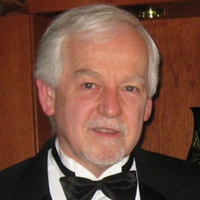
Orofacial Movement Disorders – Dystonia
Glenn Clark
Dr. Glenn Clark is a currently full Professor in the Division of Diagnostic Sciences at the Ostrow School of Dentistry of USC and Associate Dean of Distance Education and Telehealth. He is Director of the Orofacial Pain and Oral Medicine Center, and Director of the Orofacial Pain and Oral Medicine 3-year Master’s Degree and Dr. Clark is Co-Director of the 1 year certificate in Orofacial Pain at Trinity College Dublin and a Visiting International Professor at Trinity. Dr. Clark’s academic career began at UCLA and he held various administrative posts including Director of the Clinical Research Center, Director of the Dental Research Institute and Associate Dean of Research. Dr. Clark began his research work focusing on both temporomandibular disorders and trigeminal motor function and dysfunction including bruxism, dystonia, and chronic myofascial pain disorders of the jaw system. In 1986 Dr. Clark’s expanded his research work to include studies on the diagnosis and treatment of Obstructive Sleep Apnea. This work has involved him as Principal Investigator on several National Institute for Dental Research grants. Dr. Clark has written over 225 research articles, review papers, or chapters in textbooks. He has served as editor or co-editor of five books on Temporomandibular Problems and on Diagnostic and Surgical Arthroscopy. His most recent book is title Orofacial Pain: A guide to medications and management and is published by Wiley-Blackwell Inc. He has been granted membership as a Diplomat of the American Board of Orofacial Pain; he was voted alumnus of the Year of the UCLA School of Dentistry (1990). Dr. Clark was given the Pierre Robin Award for Academic Excellence (2001) by the Academy of Dental Sleep Medicine and in 2004 he was awarded honorary fellowship in the American Academy of Oral Medicine. In 2005 he was given a lifetime achievement award by the American Academy of Orofacial Pain. Finally, he was given the USC Mentoring Award by the University Provost in 2018.
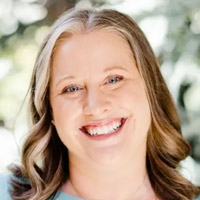
Orofaical Pain and the Role of Myofunctional Therapy
Christina Semonick, M.S., CCC-SLP
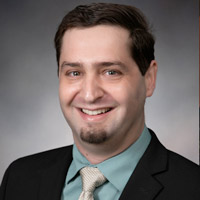
Managing Fatigue and Insomnia Symptoms in Orofacial Pain – A Practical Guide for Dentists.
Ian Boggero
![]() American Academy of Orofacial Pain is an ADA CERP Recognized Provider. ADA CERP is a service of the American Dental Association to assist dental professionals in identifying quality providers of continuing dental education. ADA CERP does not approve or endorse individual courses or instructors, nor does it imply acceptance of credit hours by boards of dentistry. American Academy of Orofacial Pain designates this activity for continuing education credits.
American Academy of Orofacial Pain is an ADA CERP Recognized Provider. ADA CERP is a service of the American Dental Association to assist dental professionals in identifying quality providers of continuing dental education. ADA CERP does not approve or endorse individual courses or instructors, nor does it imply acceptance of credit hours by boards of dentistry. American Academy of Orofacial Pain designates this activity for continuing education credits.
